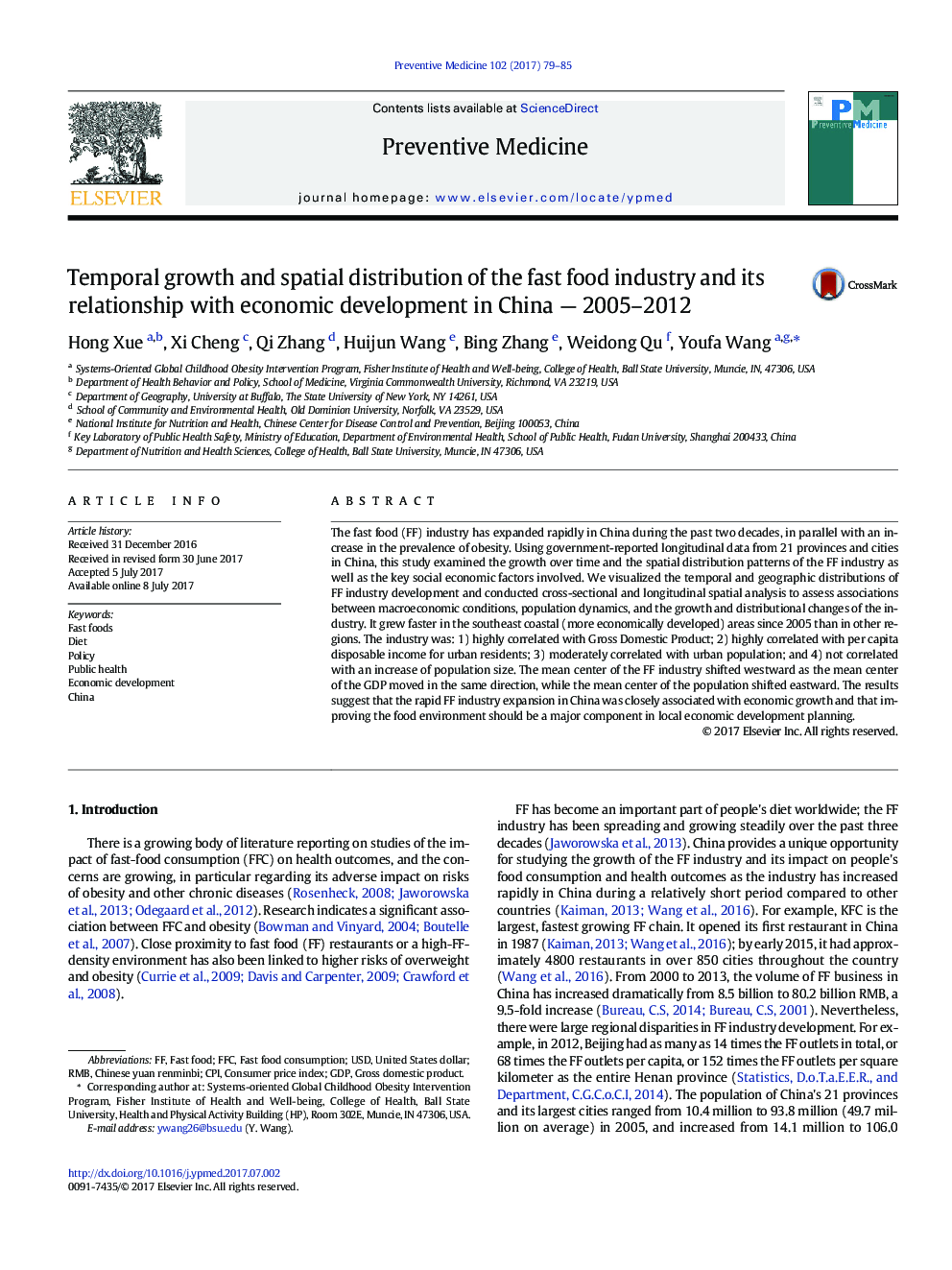| Article ID | Journal | Published Year | Pages | File Type |
|---|---|---|---|---|
| 5635572 | Preventive Medicine | 2017 | 7 Pages |
â¢Temporal trends and geographic distributions of FF industry in China were examined.â¢FF industry has expanded rapidly in China, but at different rates across regions.â¢Growth and distribution of FF industry were driven by economic development.
The fast food (FF) industry has expanded rapidly in China during the past two decades, in parallel with an increase in the prevalence of obesity. Using government-reported longitudinal data from 21 provinces and cities in China, this study examined the growth over time and the spatial distribution patterns of the FF industry as well as the key social economic factors involved. We visualized the temporal and geographic distributions of FF industry development and conducted cross-sectional and longitudinal spatial analysis to assess associations between macroeconomic conditions, population dynamics, and the growth and distributional changes of the industry. It grew faster in the southeast coastal (more economically developed) areas since 2005 than in other regions. The industry was: 1) highly correlated with Gross Domestic Product; 2) highly correlated with per capita disposable income for urban residents; 3) moderately correlated with urban population; and 4) not correlated with an increase of population size. The mean center of the FF industry shifted westward as the mean center of the GDP moved in the same direction, while the mean center of the population shifted eastward. The results suggest that the rapid FF industry expansion in China was closely associated with economic growth and that improving the food environment should be a major component in local economic development planning.
